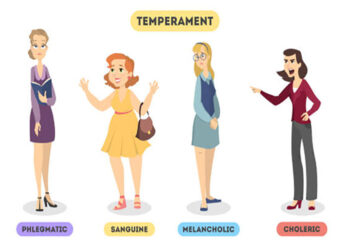
Since HIV is transmitted via sexual intercourse, most of us wonder how possible it is for a marriage partner to have HIV and the other spared. But this is medically very possible, as I have seen and heard of a lot of cases of a husband or wife being seropositive while the other is negative. This is referred to as HIV serodiscordance or discordant couple.
There are a lot of important questions regarding HIV serodiscordance I have encountered. These include how to have healthy sex to prevent transmission to the other person, and how to have children together without transmitting the disease to them. These are some of the questions I hope to answer in this post.
HIV infection seems like a deal-breaker but with the right knowledge about serodiscordance and how to live well with it, one can navigate through life without having to contract HIV from their partner.
How is Serodiscordance Possible?
HIV is dreaded because it does not yet have a cure but it is not the most infectious disease out there. WHO estimates that as many as half of all HIV-positive people in long-term relationships have HIV-negative partners (serodiscordant couples).[1]Living with HIV when one partner is positive and the other is negative – WHO
A lot of factors play a role in the transmission of HIV from one partner to the other. These include the proper communication of retroviral status to a partner, the use of preventive contraceptives (condoms), the immunity of the partner, as well as the presence or absence of other sexually transmitted infections.
A partner who discovers his seropositive status early and takes action immediately can preserve the relationship and protect the partner from getting infected. These actions include disclosing the information to the partner while offering ways to go through it together without a need for separation.
Compliance with anti-retroviral therapy can reduce HIV viral levels to undetectable levels which can greatly reduce the risk of transmission to one’s partner even when having unprotected sex. Thus, early detection, communication, and treatment adherence prevent transmission to a non-infected partner.
Major Challenges of HIV Sero-discordant Couples
There are many challenges associated with being a HIV discordant couple (that is, when a partner lives with HIV but the other is seronegative). This is why many discordant partners find it hard to disclose the information to their partners.
Here, we will see some of the major challenges of HIV-discordant couples and ways to handle them effectively.
1. Divorce
Divorce is one of the topmost challenges when a partner is HIV seropositive but the other is not. Most people believe that when one partner is positive, the other is going to be infected too but if there is a shocking discovery that one partner is seropositive while the other is not, this can make the uninfected partner uncomfortable in the relationship.
That is one of the reasons many partners choose not to disclose their status. However, this is highly discouraged. It is important to get tested early and to detect if both couples are already infected or if they are a discordant couple. And whatever the case, the couple can find ways to live normally together, some of which I have documented here.
2. Sexual activity or frequency
Being seronegative when your partner is infected is not enough reason to permanently discontinue sex with your partner. Not only can the couple stay together after finding out they are discordant but they can still have regular sex as much as they want.
The safest way discordant couples can have sex is by using condoms. That way, they can prevent transmitting the virus to the uninfected partner.
Another important and healthy way to prevent transmission is by adhering to anti-retroviral drug use to suppress the viral load to undetectable and un-transmissible levels. When the HIV viral load is extremely low, there is close to zero risk of HIV transmission to the uninfected partner even with unprotected sexual intercourse.
Lastly, the uninfected partner can take pre-exposure prophylaxis (PrEP) to prevent HIV infection. Two PrEPs approved by the US Food and Drug Administration (FDA) are the Tenofovir Fumarate/Emtricitabine combination and the Tenofovir Alafenamide/Emtricitabine combination. These are marketed under the brand names Truvada and Descovy, respectively.
3. Having children
There is a tendency for a discordant couple to avoid unprotected sex with each other to prevent transmission to the uninfected partner. This can make having children together extremely challenging.
Adoption could be the easiest way to solve this dilemma of having children as a discordant couple but it is still very possible to have children naturally as a discordant couple. This involves adhering to and complying with anti-retroviral therapy. Suppressing HIV viral load to undetectable levels can allow the couple to have natural unprotected intercourse and have a healthy uninfected child without transmitting the infection.
In addition, the uninfected partner can commence pre-exposure prophylaxis at least one month before having unprotected sexual intercourse with the seropositive partner. This adds a layer to the protection already conferred by proper adherence and viral load suppression by the infected partner.
Another way to achieve children as a discordant couple is by a procedure known as sperm-washing plus intrauterine sperm injection (ISI) or in-vitro fertilization (IVF) with intracytoplasmic sperm injection (ISCI).
Sperm washing involves artificially separating an infected man’s sperm from the semen and purifying it to remove HIV particles. This can be followed by directly injecting the purified semen into the uninfected woman’s uterus (ISI). In IVF with intracytoplasmic sperm injection (ISCI), the purified sperm is directly injected into an egg from the woman, and the resulting embryo is implanted into the mother’s uterus for development and maturation.
General HIV Treatment and Prophylaxis
The mainstay of HIV treatment is the use of HAART (Highly Active Anti-Retroviral Therapy). This involves a combination of two or more classes of anti-retroviral drugs. It is generally preferred to simple anti-retroviral therapy (ART) which is the use of a drug belonging to only one class of anti-HIV medications.
These drugs are usually offered to HIV-diagnosed individuals for free, and to be taken for life after diagnosis. Compliance with this treatment together with prophylactic treatment for other co-infections confers on the individual a normal or near-normal life even after being infected with HIV.
Discordant couples should understand the importance of adhering to HAARTs and regularly checking the viral load (at least twice a year).
Prophylaxis for HIV opportunistic infections like Toxoplasmosis, Pneumocystis jirovecii, Candidiasis, and Tuberculosis should also be included in the treatment regimen. These are Sulphadiazine-Pyrimethamine, Sulphamethoxazole-Trimetoprim, Fluconazone, and Isoniazid, respectively. These are typically prescribed based on the infected patient’s factors like viral load, CD4 count, and previous history of opportunistic infections.
Pre and Post-Exposure Prophylaxis
Pre-exposure prophylaxis, as already mentioned, is a medication taken by a person who is at risk of exposure to an infected person before getting exposed. It is a preventive measure before actual contact in the presence of a risk.
On the other hand, post-exposure prophylaxis is medications taken after one is exposed without any protection or prophylaxis. Several drugs have been approved for pre and post-exposure prophylaxis. Consult a doctor for assistance on which medications you can use for pre and/or post-exposure prophylaxis for HIV.
HIV Testing and Counselling
Couples testing can be provided as part of pregnancy care and other related health services. This can promote early detection of HIV infection and detection of sero-discordance among couples. Some countries such as Kenya, Rwanda, Thailand, Zambia, etc, have already introduced HIV testing and counseling to couples who present to the hospital for reproductive reasons or otherwise.
Preventing Mother-to-Child Transmission
When one or both partners are HIV positive, there is a chance of transmitting the virus to the unborn child. This is especially more significant when the mother is infected.
Prevention of HIV transmission to the child during pregnancy and delivery requires regular antenatal visits, compliance with medications and HAART, and proper obstetric care at delivery. An infected mother may opt for an elective Caesarian section to further reduce the risk of transmitting the infection to the child at delivery.
The antiviral drug Zidovudine has been approved as prophylaxis for pregnant women and newborns to prevent perinatal transmission to the unborn child. The chances of HIV transmission from mother to child reduce to near zero when the infected mother achieves an undetectable viral load by complying with antiretroviral medications.
If normal vaginal delivery is preferred, your doctor will put measures in place to minimize the baby’s contact with blood and body fluids of the mother outside the uterus. These include early clamping of the umbilical cord after delivery, and administration of post-exposure prophylaxis to the newborn.
Breast milk substitutes may be advised depending on the mother’s condition. An undetectable viral load can allow the mother to breastfeed the child while she continues on her antiretroviral medications and the child on post-exposure prophylaxis. But importantly, mixed feeding is highly discouraged. You should avoid combining breastfeeding with breast milk substitutes once you have commenced the substitutes.
Frequently Asked Questions
Can you have unprotected sex with your partner, if HIV positive?
It is possible to have unprotected sex with an HIV-infected partner without getting infected. The infected partner should have a very low or undetectable viral load, and the other partner can also commence pre-exposure prophylaxis (PrEP) at least a month before engaging in unprotected sexual intercourse.
Can serodiscordant partners have children together?
Yes, discordant partners can have children together. Procedures such as sperm washing and intrauterine or intracytoplasmic injection can be useful to achieve HIV-free embryos.
How can you prevent an unborn child from having HIV?
Preventing transmission of HIV to the unborn child involves several measures: adhering to ART, regular antenatal visits, proper treatment of illness during pregnancy, as well as proper obstetric care at delivery.
Can you breastfeed your child if you are HIV infected?
An infected mother can breastfeed her child if she has been compliant with her HAART and her viral load is undetectable. The child can also be on post-exposure prophylaxis until he/she commences breast milk substitutes (BMS). BMS should not be combined with breastfeeding once started as this is shown to increase the risk of transmitting HIV to the child compared to breastfeeding only.
















